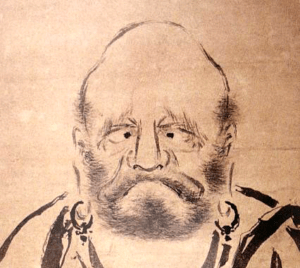Did Bodhidharma already know martial arts?

I did some research about Bodhidharma’s background in martial arts. This is what I found.
The origins of Bodhidharma’s martial arts background are somewhat uncertain, and there are different accounts of his martial arts training. Some legends say that he was trained in Kalaripayattu, an Indian martial art that incorporates striking, grappling, and weaponry techniques. Other legend tells us, that he was trained in martial arts during his time as a soldier or bodyguard before becoming a monk.
However, let’s delve into a tale often recounted in legends, although I must express my skepticism about its accuracy. According to this narrative, Bodhidharma is acclaimed as the progenitor of the Shaolin style of Kung Fu, a system he purportedly imparted to the monks dwelling within the Shaolin Temple.
In this story, the Shaolin style is portrayed as a martial art characterized by its emphasis on hand-to-hand combat techniques, blending aspects of Chinese martial arts with Bodhidharma’s own spiritual and meditative practices. Allegedly, Bodhidharma drew inspiration from his personal martial arts background and knowledge of Indian martial traditions in crafting the Shaolin style.
Legend, tinged with uncertainty, suggests that Bodhidharma’s martial arts teachings at the Shaolin Temple catalyzed the emergence of numerous Kung Fu styles. Monks under his guidance purportedly ventured forth to forge their unique techniques and systems.
“But didn’t Bodhidharma develop Kung fu from the movements of animals?”
Yes, it is often said that Bodhidharma created the Shaolin style of Kung Fu by observing and drawing inspiration from the movements of animals in nature. According to legend, Bodhidharma watched animals in the wild and noticed how they moved and fought, and he used these observations to develop a system of fighting techniques that he taught to the monks at the Shaolin Temple.
The Shaolin style incorporates many movements and techniques that are inspired by the movements of animals, such as the tiger, snake, and crane. These animal-inspired movements are meant to help practitioners develop strength, agility, flexibility, and balance, as well as to cultivate a sense of grace and fluidity in their movements.
Myths and Tales.
While numerous myths and tales swirl around Bodhidharma and
